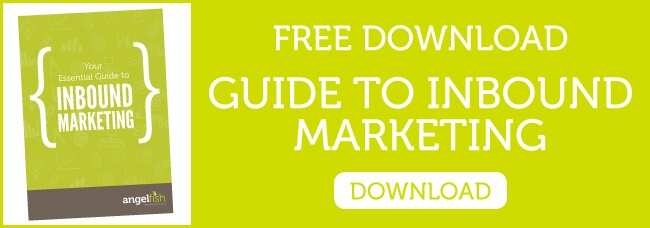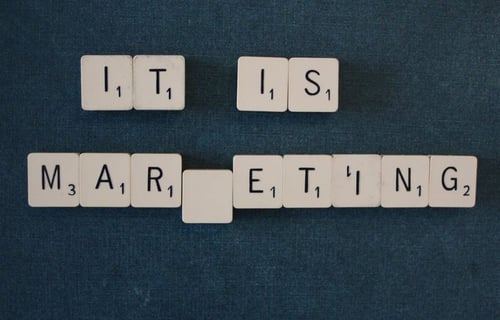Inbound and outbound marketing services are two fundamentally different marketing types that you can use to increase traffic, leads and sales for your business.
![]()
Both can be highly effective, but what are the differences between them, and is one of them better than the other?
Here we look into the main differences as well as the advantages of both to help you decide which is right for you.
What is the difference between inbound and outbound marketing?
Our inbound marketing revolves around creating content, publishing it and sharing it online to attract visitors back to your site. The aim is to provide immense value to your target audience through the content you create, encouraging them to check out your website, access even more of your content and sign up to your email list.
By continuing to provide them with valuable content that helps them solve problems, you build trust, build a stronger relationship and encourage them to become long-term customers.
Here’s a blog we wrote that provides a good overview: What is Inbound Marketing?
Outbound marketing focuses on reaching out to your target audience using various techniques, primarily cold calling and traditional print advertising. Rather than people coming across your content naturally, you target them on mass.
Let’s take a closer look at both of these to find out which is right for your organisation.

Why choose inbound marketing?
When organisations come to us to find out about our inbound marketing services, we highlight a number of benefits that make it worthwhile.
First of all, inbound marketing is focused on long-term results. This is not about running one-off campaigns that end as soon as the budget dries up. Instead, by producing a regular source of valuable content and constantly sharing and promoting it, you start to generate an ongoing stream of traffic to your site.
All that content you create, the increasing social shares, the growing domain authority – they keep on improving. This means your traffic goes up and up over time, and it has a compound effect so you will keep on getting results even when you stop actively promoting your content. Say you go a week or two without creating any new content – your published content is still working for you around the clock.
Compare this to an advertising campaign where the traffic stops the moment your campaign ends, and you’ll see what an advantage this can be.
Inbound marketing is also a great way to build trust. The way inbound marketing works is that your targets initially come across your organisation by finding your authority content. This usually answers a pressing question they have or solves a problem they are experiencing.
They might not want to buy from you right away, but they will want to find out more. So they visit your site, explore further, sign up to your list and enjoy getting even more valuable content on a regular basis.
A campaign built on high-value content is the best way to increase trust and grow a relationship, and once they are ready to invest in the products and services you provide, they will have no hesitation in choosing you.
Inbound marketing is also a great way to build authority. When people see your site ranking at the top of the search results or see you have lots of social followers, they immediately assume that you are an authority that they can trust. Why else would so many people choose to follow you? This affects how people think about your brand from the first moment they come across it.
You will also benefit from multiple touch-points when you invest in inbound marketing. One of the most popular marketing stats is that people buy on the seventh contact with your company. That means you have to keep on getting in front of them on a regular basis if you want them to buy from you. Inbound marketing is built on the idea of increasing touch points so you can keep on getting in front of your targets until they are ready to buy.
You might be thinking about how much you can realistically spend on your marketing budget, but inbound marketing is very cost-effective. There is no need to pay for each visit like advertising, and once your content is published, it’s doing its work for as long as it stays online, increasing visibility and driving more traffic.
One final point is that inbound marketing is less time-consuming than many other types of marketing. While creating content does involve work, the way that inbound works is that people come to YOU so there is no need to waste time crafting an outreach message that is likely to generate very little response (cold emailing can have terrible response rates!).
But on top of that, once someone is on your warm email list after engaging with your content or following you on social media, you can keep your message in front of them regularly. This also goes for your existing customers. Finding new customers is hard work. It is six times more expensive to find a new customer compared to selling to an existing customer. Once people become customers, you can keep reminding them of the value you provide and the quality of your service to keep them coming back for more.
If you’re thinking of investing in inbound marketing, you can learn more here:
- 20 stats to convince your boss to invest in inbound marketing services
- Why your business needs an inbound marketing gameplan…
- 7 Simple ways to become an inbound marketing expert
Why choose outbound marketing?
Outbound has its place, and for some businesses it is their primary marketing strategy. So why might it be a good option for you?
One reason to use outbound marketing is that it can still be highly effective. While many people complain about receiving cold calls, they can still get good results when done properly. Well-planned, well researched, highly targeted outbound sales calls have the benefit of the human touch. Speaking to people in a friendly, non-pressured way can encourage them to try out your products or services where before they would not have given you a second thought.
When done properly, outbound does not have to be too expensive. Advertising costs money, but there are ways to cut your costs and improve results. That being said, unless you have a deep understanding of the advertisers you are publishing with, tracking and ROI can be very hard to achieve.
If you’d like to get started with inbound marketing but you’re unsure about how to go about it, start by downloading our Inbound Marketing Guide – get yours here today.










